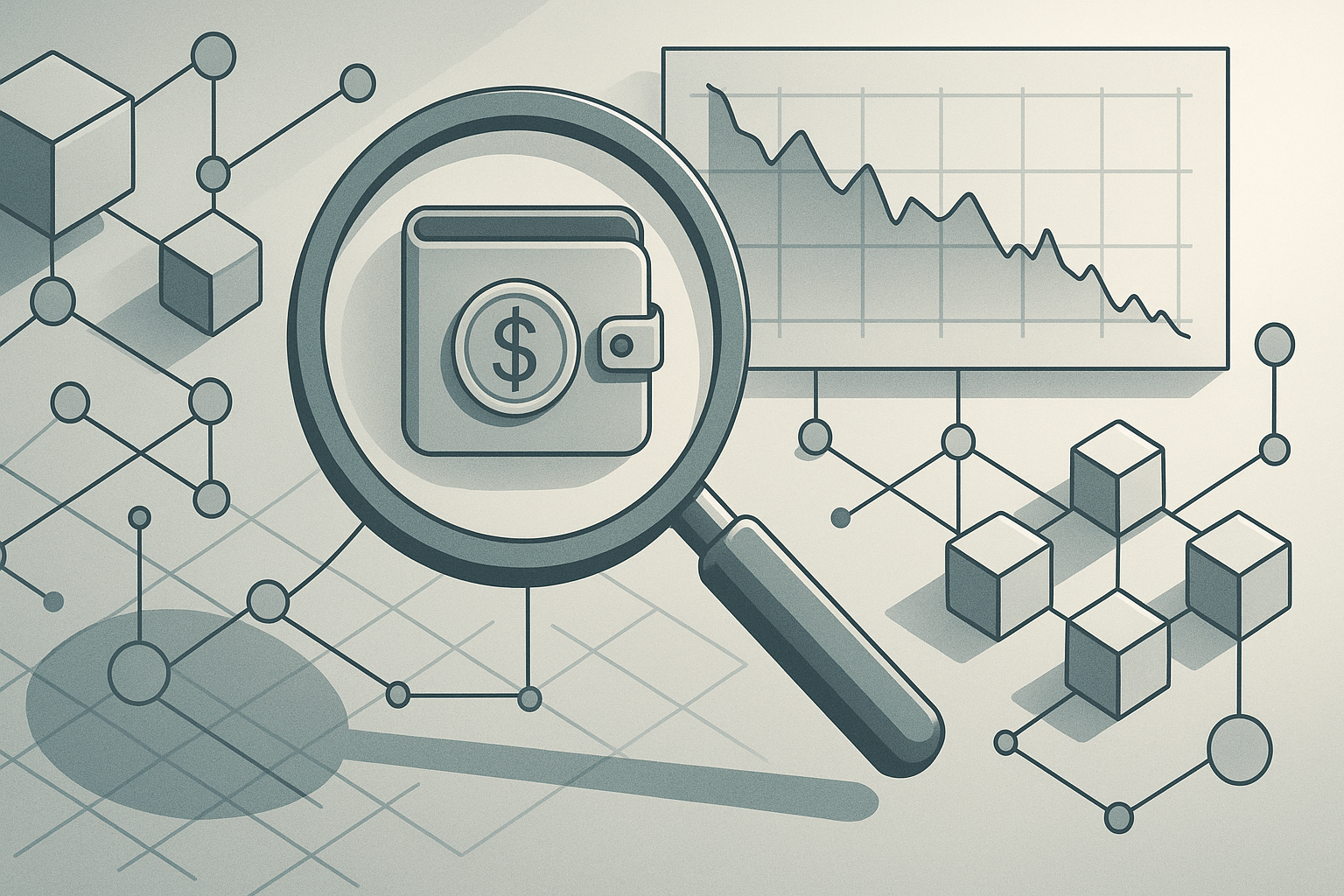Chainalysis reported that on-chain holdings tied to illicit activity now exceed $75 billion, a sum that remains visible on public ledgers and raises questions for investigators and service providers. The finding draws attention to concentration, movement, and custody of questionable funds on Ethereum and other chains, and it frames core concerns for compliance teams and analysts.
Become a Doc: Profile Ethereum wallets and discover their behavior.
Use WalletAutopsy.
What the report measures
The research tracks addresses and clusters that connect to criminal activity and service providers, using a mix of on-chain labels and transaction analysis. The report identifies funds associated with scams, thefts, darknet markets, sanctions evasion, and laundering services, and then sums balances that remain on ledgers. This methodology gives a snapshot of assets that are currently held in addresses with some link to illicit behavior rather than total historical flows.
Where the funds are held
Chainalysis finds that a significant portion of the identified balances sits under the control of custodial platforms, mixing tools, and a relatively small number of high-value addresses. Centralized services often act as points of concentration because they aggregate funds from many users and offer on- and off-ramps to fiat. That concentration complicates enforcement because tracing a flow is only the first step; recovering or freezing assets requires cooperation from service operators and, in many cases, legal authority.
Patterns in transfers and retention
The data show varied behavior among illicit-linked holdings: some funds move rapidly through chains and services, while other sums remain unmoved for lengthy periods. Mixing services and tumblers continue to appear in transactional paths, and certain custodial addresses repeatedly receive funds from flagged sources. These patterns allow investigators to prioritize leads, though the presence of dormant balances also speaks to the persistence of on-chain value in contested accounts.
Implications for exchanges and compliance
Exchanges and custodians face heightened scrutiny because they frequently touch addresses that the report identifies. Compliance teams must combine on-chain signals with off-chain customer data to act on suspicious deposits and withdrawals. The report suggests that enhanced information sharing and stronger know-your-customer practices could reduce the ease with which illicit funds travel through regulated rails.
Enforcement and international cooperation
Law enforcement agencies see on-chain evidence as helpful but not decisive on its own. Legal processes are necessary to trace ownership off-chain and to compel custodians to freeze or return assets. Cross-border coordination is a recurring theme, since many service providers and beneficiaries span jurisdictions and differing regulatory regimes.
How crypto analytics are used
Blockchain researchers and investigators apply crypto analytics tools to tag addresses, follow transaction flows, and identify clusters of activity. These tools improve the speed and accuracy of tracing, but they also depend on the quality of labeling and the availability of off-chain identifiers. The report shows how analytics can highlight concentrations of suspicious funds and expose connections that were previously obscure.
Risks for ordinary users and markets
High balances linked to illicit activity carry market and reputational risks for platforms and token projects. Frozen or seized funds can disrupt liquidity, and public association with illicit flows can damage a provider’s standing with regulators and customers. Users who interact with flagged addresses may face delays, account actions, or legal scrutiny, even if their own funds are legitimate.
What the findings do not say
The report quantifies balances currently associated with illicit labels, but it does not equate those balances with proven criminal ownership in every case. Labeling reflects investigative judgments and available intelligence; some tagged addresses could later be reclassified as new information emerges. The figure therefore serves as an analytical indicator rather than a definitive ledger of culpability.
Next steps for the industry
Observers and participants are likely to press for clearer standards and enhanced cooperation among analytics providers, exchanges, and regulators. Policy responses may include stricter onboarding checks, better data sharing, and improved response protocols for suspected illicit transfers. Any effective approach will require balance so that legitimate innovation and user privacy are not needlessly compromised.
Concluding perspective
The Chainalysis assessment highlights the enduring visibility of illicit-linked value on public blockchains and the operational challenges that follow. Crypto wallets and custodial addresses play central roles in where these balances appear and in how quickly investigators can act. For compliance officers, investigators, and market participants, the report offers a calibrated view of what can be seen on-chain and what still rests beyond straightforward measurement.
As public ledger data continue to be a primary source for tracking value, the interplay of analytics, legal authority, and cooperative practices will determine whether those balances become evidence, seized assets, or lingering liabilities for the ecosystem.
